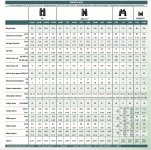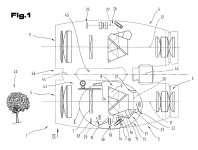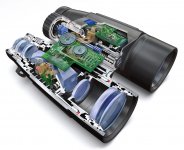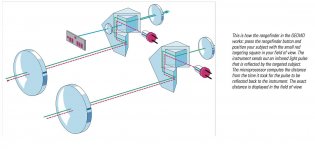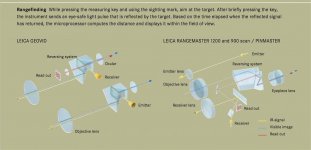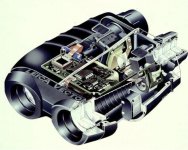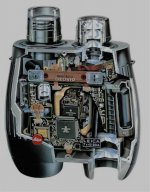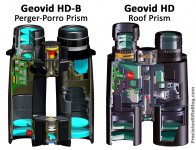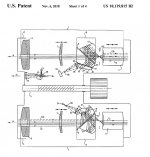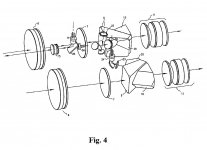Hi Arthur,
I’ve not read about the subject generally, so perhaps someone will be able to provide some references about the technical issues related to the design of binocular rangefinders
What I have found is a limited amount of detail about specific product lines
There are some cutaway images, but as can be seen they mostly show the non-laser optics together with the electronics
More usefully, there a number of patents that do show detail of the laser related optics, along with descriptions
n.b. while most binocular RF’s project the laser from one of the barrels, some have an externally mounted laser
e.g. both the 2nd and 3rd generation Leica Geovids and the Meopta MeoRange (in contrast to the MeoPro Optika LR)
In relation to the Swarovski EL Range:
- I’ve attached 2 patents that include detailed images and descriptions, and
- additional information with 4 images provided by Jan van Daalen can be found in post #8 at:
https://www.birdforum.net/showthread.php?p=3240001
Jan’s confirmation as to the lack of a beam splitter, is probably the key to explaining the Swarovski’s superior optical performance
In relation to the two generations of Zeiss binocular RF’s, the only detail that I’ve found is a patent and an additional cut away image,
both of which are for the 1st generation version
There have been 3 generations of Leica Geovids:
- the first using Porro prisms (a rebadged Vectronix)
- the second using Uppendahl prisms
- the most recent using Perger prisms
And I’ve attached a number of patents and images
And finally the Meopta MeoRange patent
So lots to occupy those who are technically inclined
John





